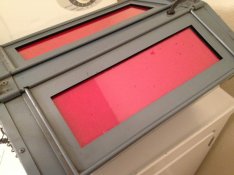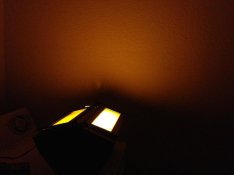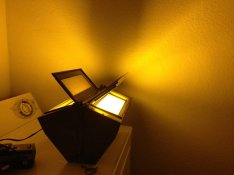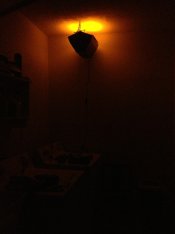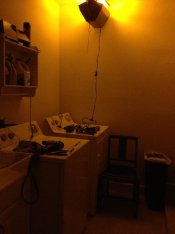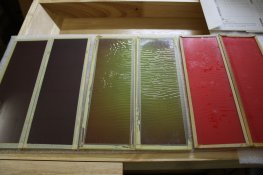Ken Nadvornick
Member
I've been recommending the Roscoe #19 Fire filter for years. It's a complete replacement for the black-and-white set of OEM filters that originally came with the unit. Meaning you can completely replace them with a single thickness of the Roscoe material. When you do this replacement the Roscoe filter will completely block the additional blue and green wavelength spikes coming from the low-pressure sodium vapor tube.
While the LPS tube is nominally a sodium-only device which should produce only light from the well-known sodium emission doublet at ~589nm, it also includes small amounts of argon and neon. These gases (called a Penning mixture) are required to assist in the inital striking of the lamp. They are also the source of the additional blue and green spikes in the output spectrum.
These spikes are the true source of the long-standing complaints that the Duplex is "too bright and fogs paper." Remove these spikes and the sodium-only light will not fog your paper, if it's Kodak OC filter safe in the first place. I have pre-flash tested my #19-filtered Duplex out to 30 minutes with Kentmere Bromide grade #3 (a fast bromide emulsion) without any hint of fog.
My standard advice is to go find a CD or DVD disc from your collection, then hold it up to an unfiltered Duplex lamp and look at the reflected light. You will easily see the blues and greens separated out. Then look at the same lamp through a #19 filter and will see the blues and greens have vanished, with only the sodium yellow remaining. This visual test works on any safelight. It's especially recommended for red LED lamps, as they too will often emit small blue or green spikes.
The Roscoe filter will also reduce the intensity of the sodium light down to about 35% of its unfiltered intensity. This is actually very useful in smaller darkrooms. Although safe, the intensity can get in the way during image focusing on the easel.
Ken
[Edit: For those who may wish to purchase a new low-pressure sodium safelight, but thought they missed the boat when the Thomas Instrument Company went out of business, check out this LPS-based OC-1012 Safelight from the Sebastian Darkroom Products division of California Stainless Manufacturing. California Stainless is the OEM manufacturer for many of the Arkay lines of stainless steel products. Email them and ask for a paper catalog. It's pretty cool.]
[Edit2: My current (January 2012) price list shows the OC-1012 Safelight (model #72882) at $370.00, and the LPS replacement tubes at $135.00.]
While the LPS tube is nominally a sodium-only device which should produce only light from the well-known sodium emission doublet at ~589nm, it also includes small amounts of argon and neon. These gases (called a Penning mixture) are required to assist in the inital striking of the lamp. They are also the source of the additional blue and green spikes in the output spectrum.
These spikes are the true source of the long-standing complaints that the Duplex is "too bright and fogs paper." Remove these spikes and the sodium-only light will not fog your paper, if it's Kodak OC filter safe in the first place. I have pre-flash tested my #19-filtered Duplex out to 30 minutes with Kentmere Bromide grade #3 (a fast bromide emulsion) without any hint of fog.
My standard advice is to go find a CD or DVD disc from your collection, then hold it up to an unfiltered Duplex lamp and look at the reflected light. You will easily see the blues and greens separated out. Then look at the same lamp through a #19 filter and will see the blues and greens have vanished, with only the sodium yellow remaining. This visual test works on any safelight. It's especially recommended for red LED lamps, as they too will often emit small blue or green spikes.
The Roscoe filter will also reduce the intensity of the sodium light down to about 35% of its unfiltered intensity. This is actually very useful in smaller darkrooms. Although safe, the intensity can get in the way during image focusing on the easel.
Ken
[Edit: For those who may wish to purchase a new low-pressure sodium safelight, but thought they missed the boat when the Thomas Instrument Company went out of business, check out this LPS-based OC-1012 Safelight from the Sebastian Darkroom Products division of California Stainless Manufacturing. California Stainless is the OEM manufacturer for many of the Arkay lines of stainless steel products. Email them and ask for a paper catalog. It's pretty cool.]
[Edit2: My current (January 2012) price list shows the OC-1012 Safelight (model #72882) at $370.00, and the LPS replacement tubes at $135.00.]
Last edited by a moderator:










